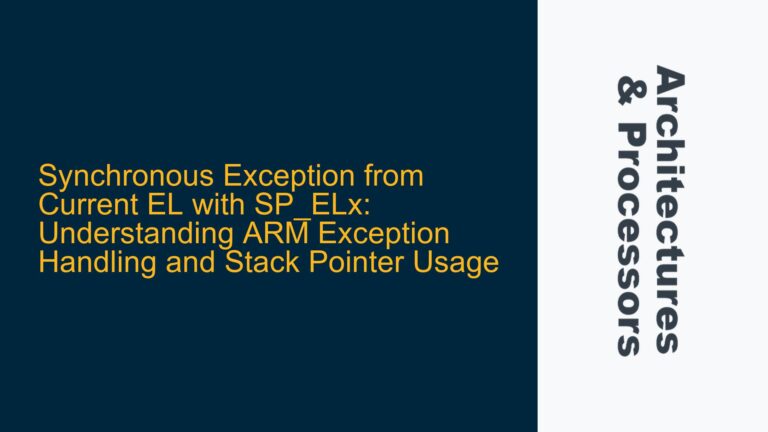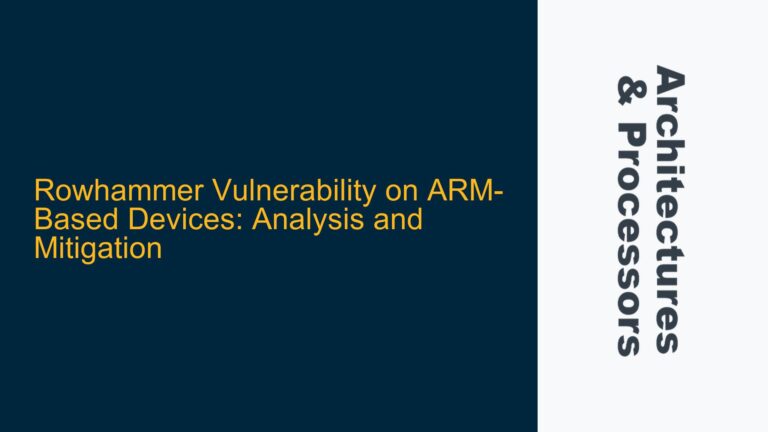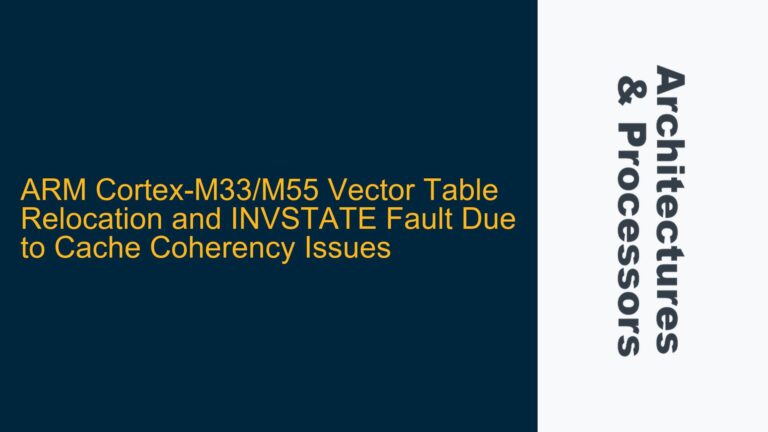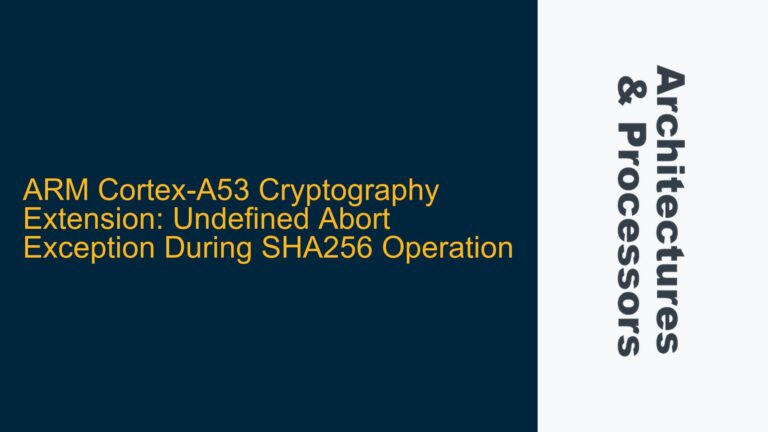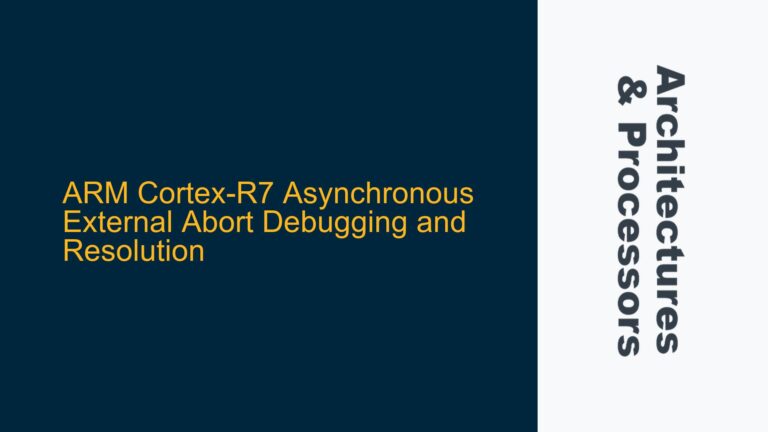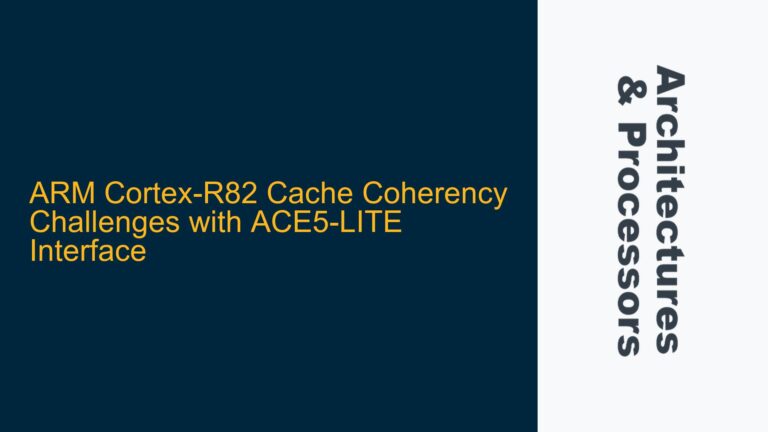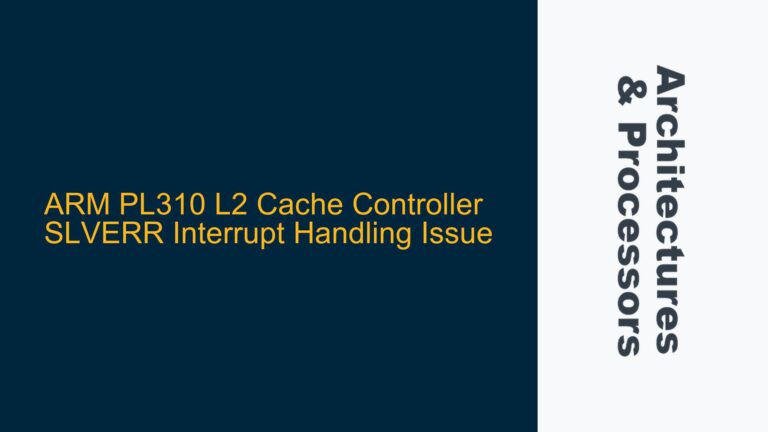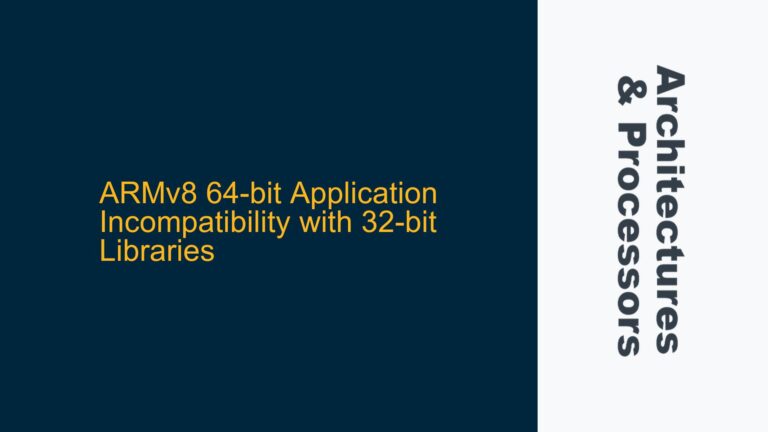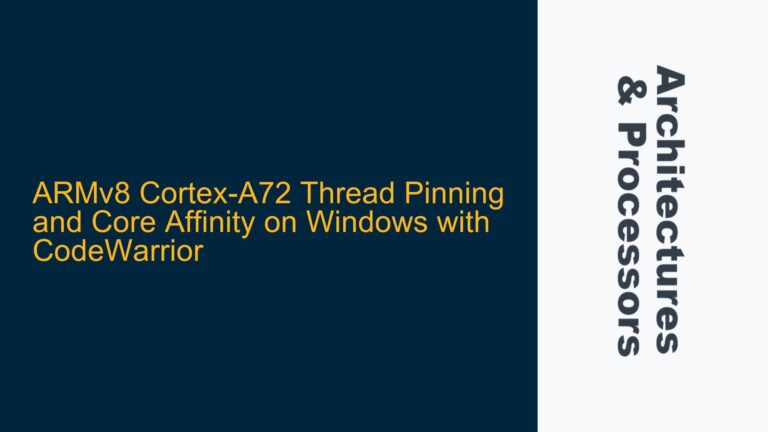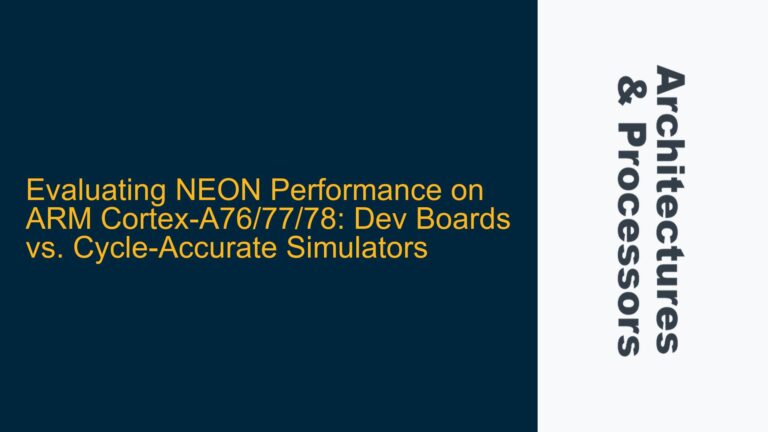Synchronous Exception from Current EL with SP_ELx: Understanding ARM Exception Handling and Stack Pointer Usage
ARM Exception Handling: Synchronous Exceptions and Stack Pointer Selection In ARM architectures, particularly in ARMv8 and later, exception handling is a critical aspect of system design and debugging. A synchronous exception is one that occurs as a direct result of the execution of an instruction, such as an undefined instruction, a memory access fault, or…
